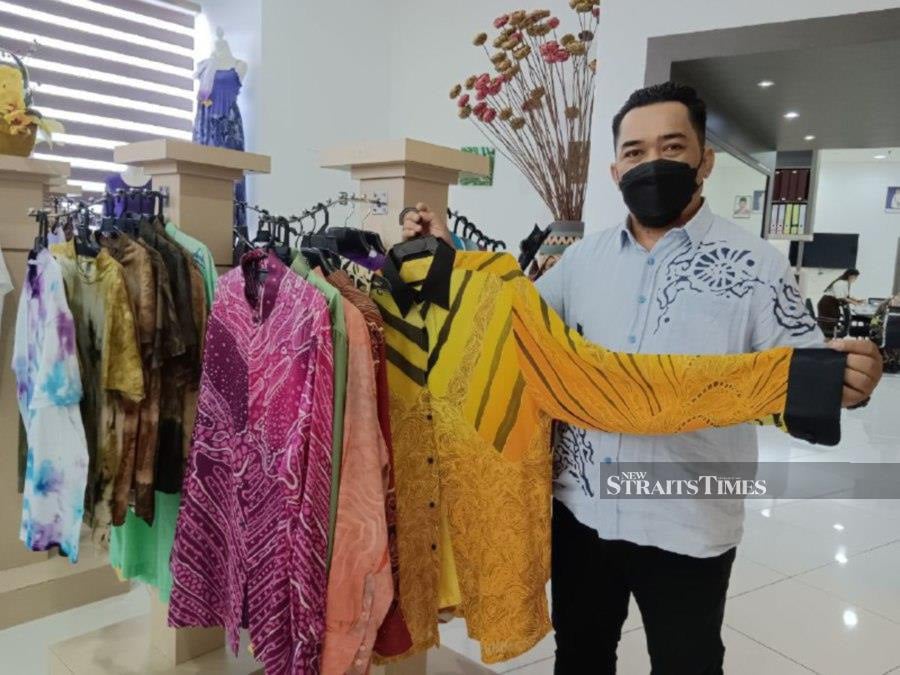By Olivia Miwil - January 29, 2022 @ 11:04am
KOTA KINABALU: Coming in later than other Malaysian states in producing batik, Sabah nevertheless still fared well in the wax-resist dyeing textile sector.
Yuslan Jafri from Sandakan, who has nearly three decades of designing and marketing experience under his belt, said Sabah has its uniqueness in the form of motives and designs used for the batik textiles.
The 47-year-old self-taught designer said it is undeniable that batik originated from Indonesia but its influence has eventually spread to nearby regions including Malaysia.
He found out from the Jakarta Batik Summit about 10 years ago that batik, which involved drawing, waxing and dying techniques, is already being produced in many other countries.
"For Sabah, our designs are usually based on our over 40 ethnics' motives, the floral and fauna, as well as the marine life such as the corals.
"We can say that batik textile is the best medium or souvenir that can be presented to guests or diplomatic officials from other countries in introducing Sabah to the world," he told the New Straits Times when met at the Galleria Artisan at Wisma Tun Fuad Mustapha here.
Yuslan, who is the designer for Yayasan Sabah's subsidiary company Kristal Handal Sdn Bhd, said, unlike other arts, batik textile is in high demand both locally and abroad.
Depending on the materials and design, hand-painted batik clothing can range from RM100 up to thousand of ringgit per piece.
He said for batik, they usually use various types of material such as British India, cotton linen, silk chiffon and satin silk among others.
"The design also determines the price of the products, for simple motives it would be cheaper as we could produce up to eight pieces per day. Unlike those with intricate details that would require days of work.
"Therefore, to meet the demand, even for events held in Sabah, we have to resort to batik printing instead of hand-painting," he said adding that the expectation has always exceeded the products that the industry could supply.
Having worked with renowned designers and boutique owners in Kuala Lumpur, Yuslan said the batik industry has the potential to penetrate markets abroad.
For European countries, he said the people look into earthy tones for their fashion while customers in the middle east love striking colours.
"In essence, while other artworks are taking time to be sold, batik clothing is always in demand, promising a steady income.
"Therefore, we should encourage more people including youngsters to venture into the skill of producing batik."

Comments
Post a Comment